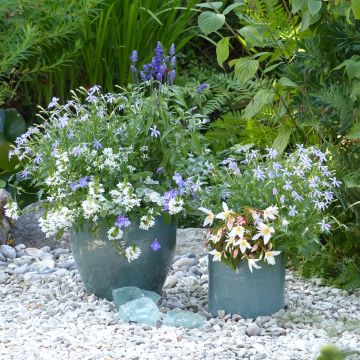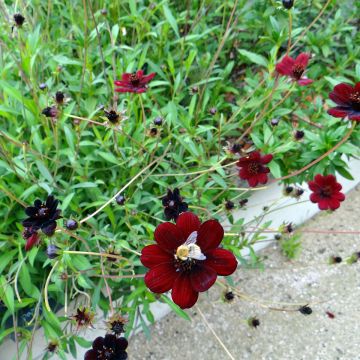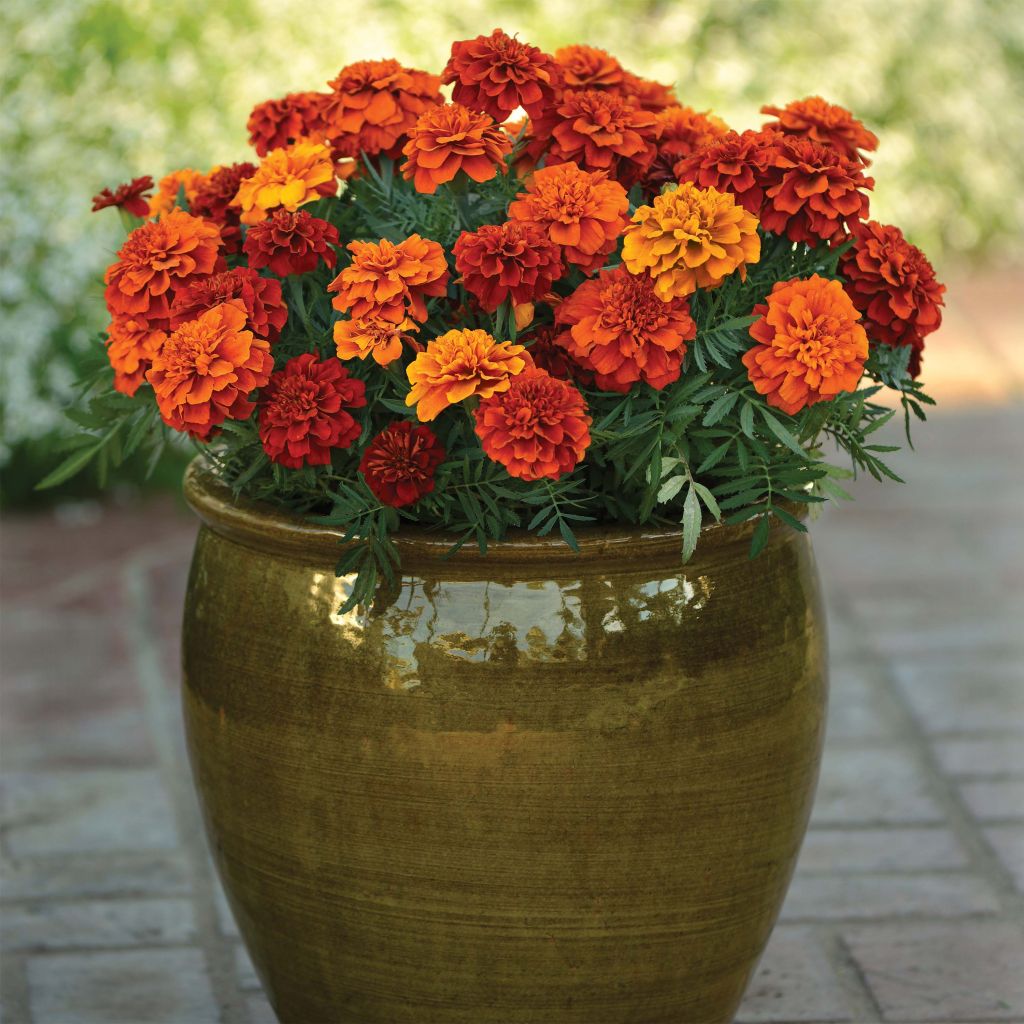

Tagetes erecta Fireball
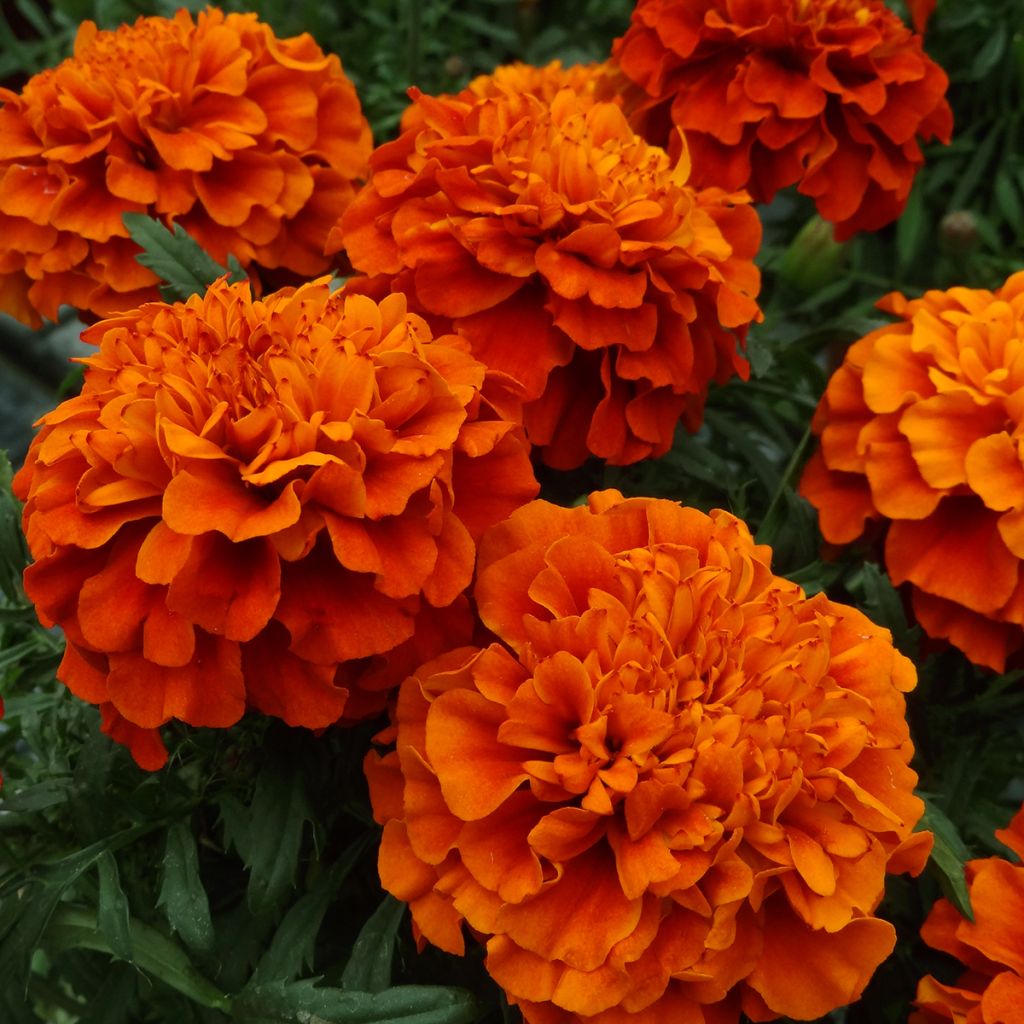

Tagetes erecta Fireball
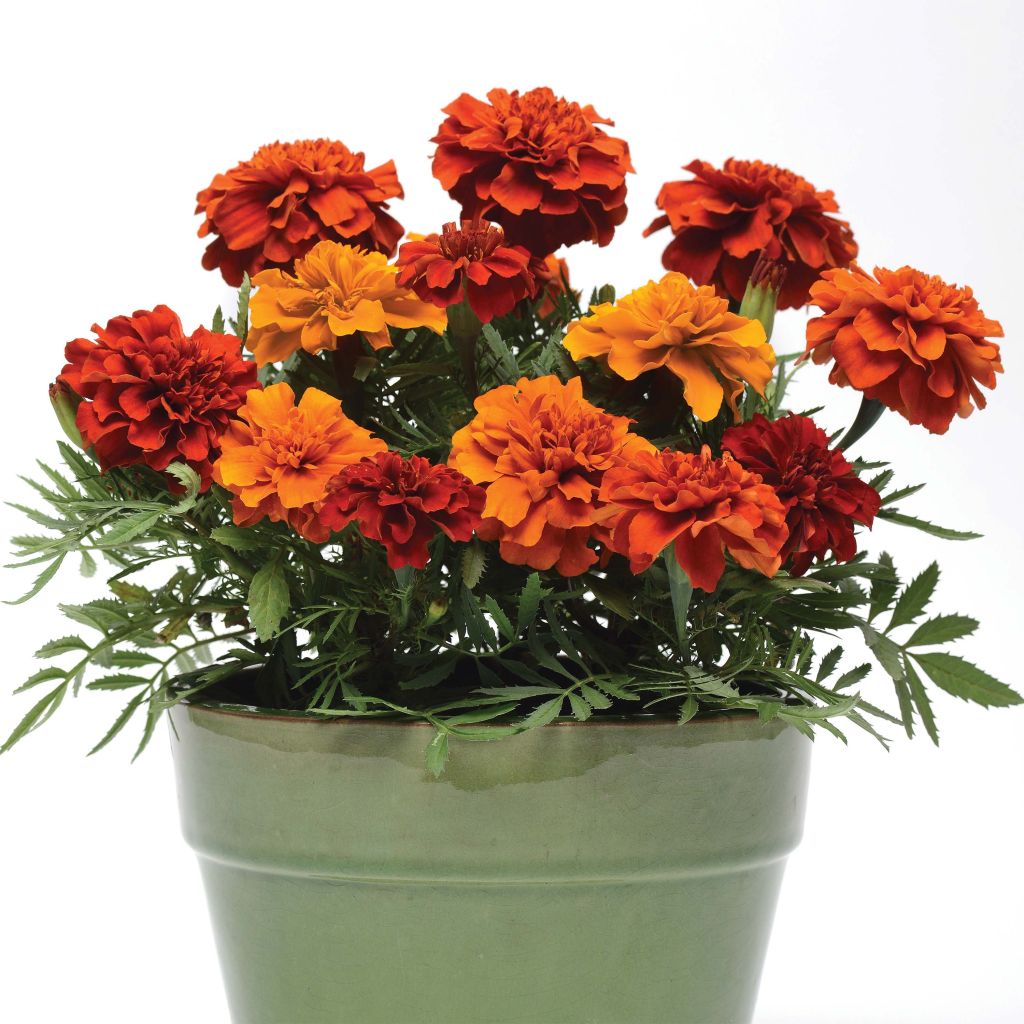

Tagetes erecta Fireball
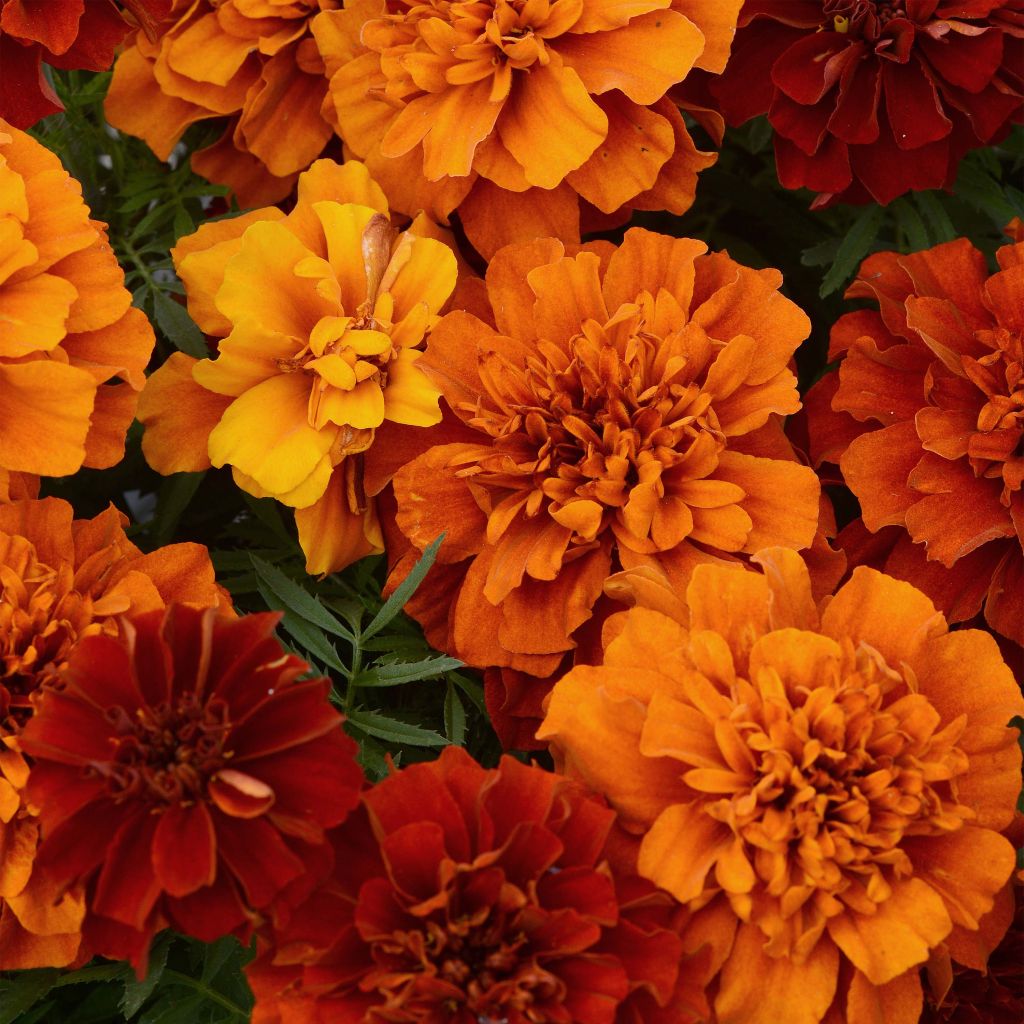

Tagetes erecta Fireball
Tagetes erecta Fireball
Tagetes patula x erecta Fireball
French Marigold, Marigold
Very disappointed, the small plugs do not shoot, they have remained very small, useless, I do not recommend.
Soizic, 17/05/2024
Special offer!
Receive a €20 voucher for any order over €90 (excluding delivery costs, credit notes, and plastic-free options)!
1- Add your favorite plants to your cart.
2- Once you have reached €90, confirm your order (you can even choose the delivery date!).
3- As soon as your order is shipped, you will receive an email containing your voucher code, valid for 3 months (90 days).
Your voucher is unique and can only be used once, for any order with a minimum value of €20, excluding delivery costs.
Can be combined with other current offers, non-divisible and non-refundable.
Home or relay delivery (depending on size and destination)
Schedule delivery date,
and select date in basket
This plant carries a 6 months recovery warranty
More information
We guarantee the quality of our plants for a full growing cycle, and will replace at our expense any plant that fails to recover under normal climatic and planting conditions.
Would this plant suit my garden?
Set up your Plantfit profile →
Description
The Fireball French Marigold, in Latin Tagetes (x) patula, is a fabulous novelty, truly unique due to its pompom flowers whose colour changes over time, from golden yellow to light orange and then to dark red, slowly in spring, more quickly if temperatures are high. The entire plant, multicoloured, forms a real flamboyant bouquet from spring to autumn. It is an exceptional annual plant that brings life to even the smallest balcony, as well as sun-drenched borders, even in dry soil.
The Tagetes (x) erecta 'Fireball' is a perennial herbaceous and tender plant, grown as an annual in most of our climates. This hybrid plant from the Asteraceae family is of horticultural origin, derived among others from a wild species paradoxically named African Marigold, native to Mexico, Central America, and the western part of South America. Its other parent, Tagetes patula, is native to tropical regions of the Americas, from Mexico to Bolivia. The plant quickly forms an erect and branched bushy clump from the base, reaching 25 cm (9.8 in) in height and 30 cm (11.8 in) in diameter. Its sturdy angular stems bear large double flowers, terminal, with variable colours on the same plant, resembling large fluffy pompoms. This is a truly exceptional colour among Marigolds, which changes more slowly from yellow to red in cool conditions, such as those experienced in spring, than in midsummer.
Its leaves, 5 to 10 cm (2 - 3.9 in) long, are deeply divided and loaded with an essential oil with medicinal properties, whose characteristic scent is reminiscent of citrus and pepper, or even apple.
Marigolds are popular plants in summer beds, due to their very easy cultivation, in borders or in pots on the terrace. The strong stems allow to create beautiful summer bouquets. The 'Fireball' variety, a true flaming ball, naturally finds its place in planters and flower pots. It can also be placed in small touches among the grey foliage of artemisias and stachys, with ageratums, or surrounded by greenery, by combining it with tansies, Kochia Childsii, or small grasses that will temper its large double corollas. The Marigold is edible, and its petals can be added to summer salads to enhance their flavour and colour.
The scent of Marigold foliage, and the substances secreted by their roots repel certain pests that are harmful to crops, which is why these plants are often installed among vegetables in the vegetable garden. The Marigold, on the other hand, is also a medicinal and dye plant, from which an essential oil and a yellow food colouring are extracted.
Note: Please be aware that our young plants in mini-pots are professional products reserved for experienced gardeners: upon receipt, transplant and store them under cover (veranda, greenhouse, frame...) at a temperature above 14C° for a few weeks before being installed outdoors once all risk of frost has passed.
Report an error about the product description
Tagetes erecta Fireball in pictures
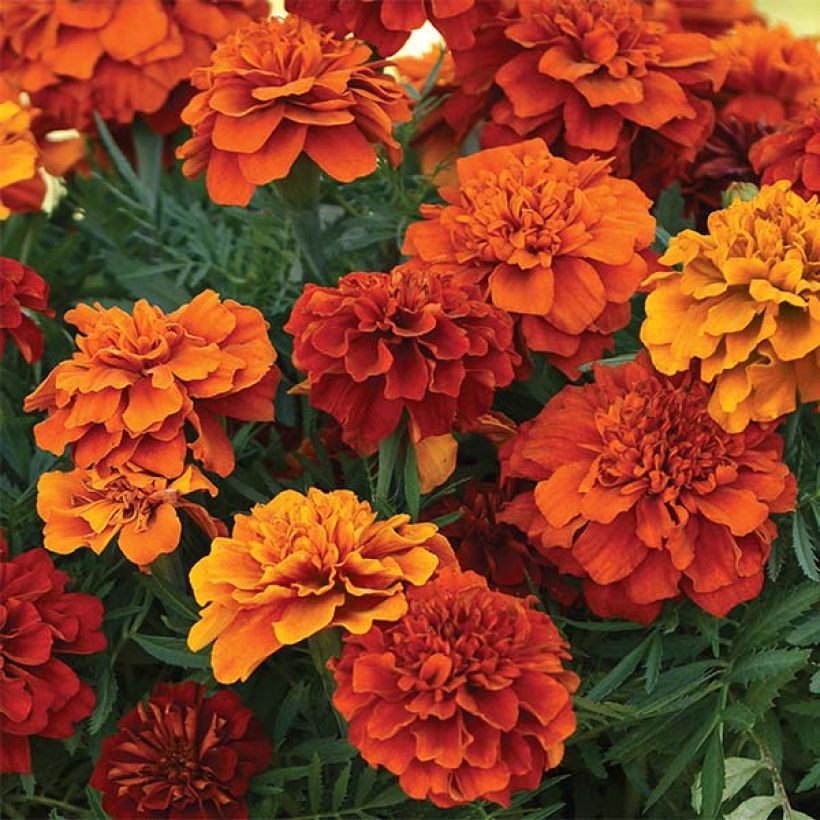

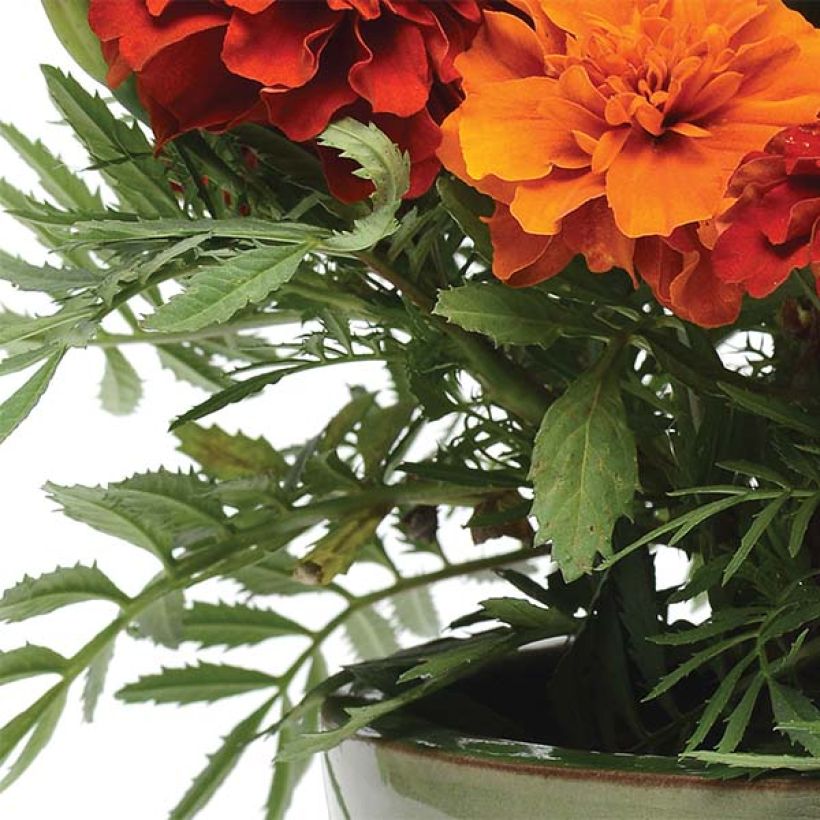

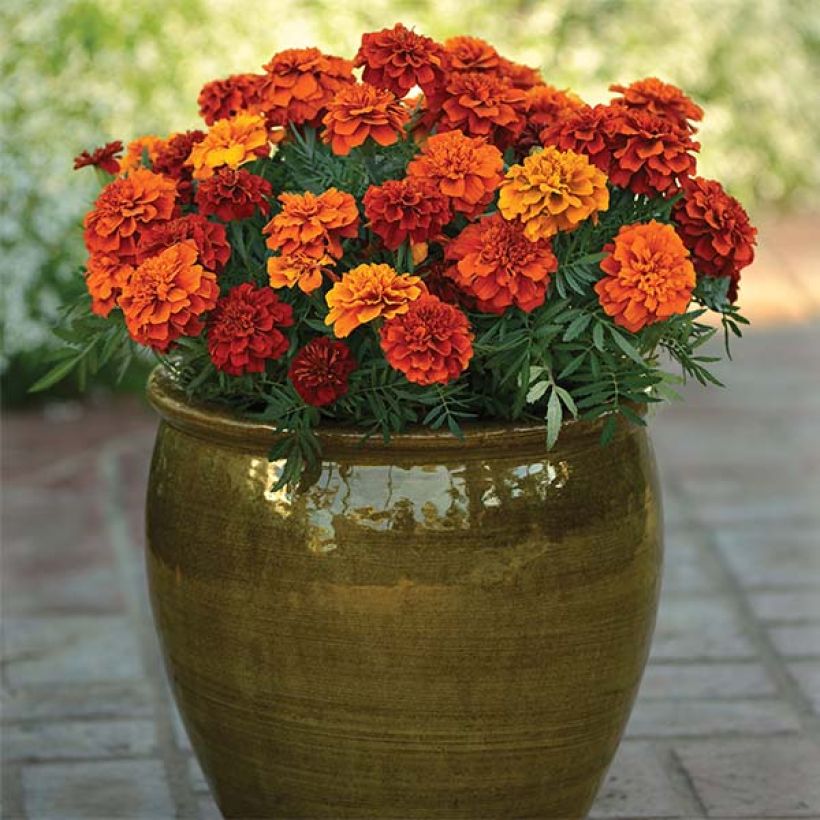

Flowering
Foliage
Plant habit
Botanical data
Tagetes
patula x erecta
Fireball
Asteraceae
French Marigold, Marigold
Cultivar or hybrid
Other Tagetes
View all →Planting and care
Marigolds are fast-growing plants that thrive in sunny and warm conditions. Install them in a fertile, well-drained, light soil. Avoid excessive watering in summer, as it promotes the growth of fungal diseases and root rot. Regularly remove faded flowers to prolong flowering. Protect the plants from slugs and snails, which are fond of them.
Planting period
Intended location
Care
-
, onOrder confirmed
Reply from on Promesse de fleurs
Similar products
Haven't found what you were looking for?
Hardiness is the lowest winter temperature a plant can endure without suffering serious damage or even dying. However, hardiness is affected by location (a sheltered area, such as a patio), protection (winter cover) and soil type (hardiness is improved by well-drained soil).

Photo Sharing Terms & Conditions
In order to encourage gardeners to interact and share their experiences, Promesse de fleurs offers various media enabling content to be uploaded onto its Site - in particular via the ‘Photo sharing’ module.
The User agrees to refrain from:
- Posting any content that is illegal, prejudicial, insulting, racist, inciteful to hatred, revisionist, contrary to public decency, that infringes on privacy or on the privacy rights of third parties, in particular the publicity rights of persons and goods, intellectual property rights, or the right to privacy.
- Submitting content on behalf of a third party;
- Impersonate the identity of a third party and/or publish any personal information about a third party;
In general, the User undertakes to refrain from any unethical behaviour.
All Content (in particular text, comments, files, images, photos, videos, creative works, etc.), which may be subject to property or intellectual property rights, image or other private rights, shall remain the property of the User, subject to the limited rights granted by the terms of the licence granted by Promesse de fleurs as stated below. Users are at liberty to publish or not to publish such Content on the Site, notably via the ‘Photo Sharing’ facility, and accept that this Content shall be made public and freely accessible, notably on the Internet.
Users further acknowledge, undertake to have ,and guarantee that they hold all necessary rights and permissions to publish such material on the Site, in particular with regard to the legislation in force pertaining to any privacy, property, intellectual property, image, or contractual rights, or rights of any other nature. By publishing such Content on the Site, Users acknowledge accepting full liability as publishers of the Content within the meaning of the law, and grant Promesse de fleurs, free of charge, an inclusive, worldwide licence for the said Content for the entire duration of its publication, including all reproduction, representation, up/downloading, displaying, performing, transmission, and storage rights.
Users also grant permission for their name to be linked to the Content and accept that this link may not always be made available.
By engaging in posting material, Users consent to their Content becoming automatically accessible on the Internet, in particular on other sites and/or blogs and/or web pages of the Promesse de fleurs site, including in particular social pages and the Promesse de fleurs catalogue.
Users may secure the removal of entrusted content free of charge by issuing a simple request via our contact form.
The flowering period indicated on our website applies to countries and regions located in USDA zone 8 (France, the United Kingdom, Ireland, the Netherlands, etc.)
It will vary according to where you live:
- In zones 9 to 10 (Italy, Spain, Greece, etc.), flowering will occur about 2 to 4 weeks earlier.
- In zones 6 to 7 (Germany, Poland, Slovenia, and lower mountainous regions), flowering will be delayed by 2 to 3 weeks.
- In zone 5 (Central Europe, Scandinavia), blooming will be delayed by 3 to 5 weeks.
In temperate climates, pruning of spring-flowering shrubs (forsythia, spireas, etc.) should be done just after flowering.
Pruning of summer-flowering shrubs (Indian Lilac, Perovskia, etc.) can be done in winter or spring.
In cold regions as well as with frost-sensitive plants, avoid pruning too early when severe frosts may still occur.
The planting period indicated on our website applies to countries and regions located in USDA zone 8 (France, United Kingdom, Ireland, Netherlands).
It will vary according to where you live:
- In Mediterranean zones (Marseille, Madrid, Milan, etc.), autumn and winter are the best planting periods.
- In continental zones (Strasbourg, Munich, Vienna, etc.), delay planting by 2 to 3 weeks in spring and bring it forward by 2 to 4 weeks in autumn.
- In mountainous regions (the Alps, Pyrenees, Carpathians, etc.), it is best to plant in late spring (May-June) or late summer (August-September).
The harvesting period indicated on our website applies to countries and regions in USDA zone 8 (France, England, Ireland, the Netherlands).
In colder areas (Scandinavia, Poland, Austria...) fruit and vegetable harvests are likely to be delayed by 3-4 weeks.
In warmer areas (Italy, Spain, Greece, etc.), harvesting will probably take place earlier, depending on weather conditions.
The sowing periods indicated on our website apply to countries and regions within USDA Zone 8 (France, UK, Ireland, Netherlands).
In colder areas (Scandinavia, Poland, Austria...), delay any outdoor sowing by 3-4 weeks, or sow under glass.
In warmer climes (Italy, Spain, Greece, etc.), bring outdoor sowing forward by a few weeks.


































